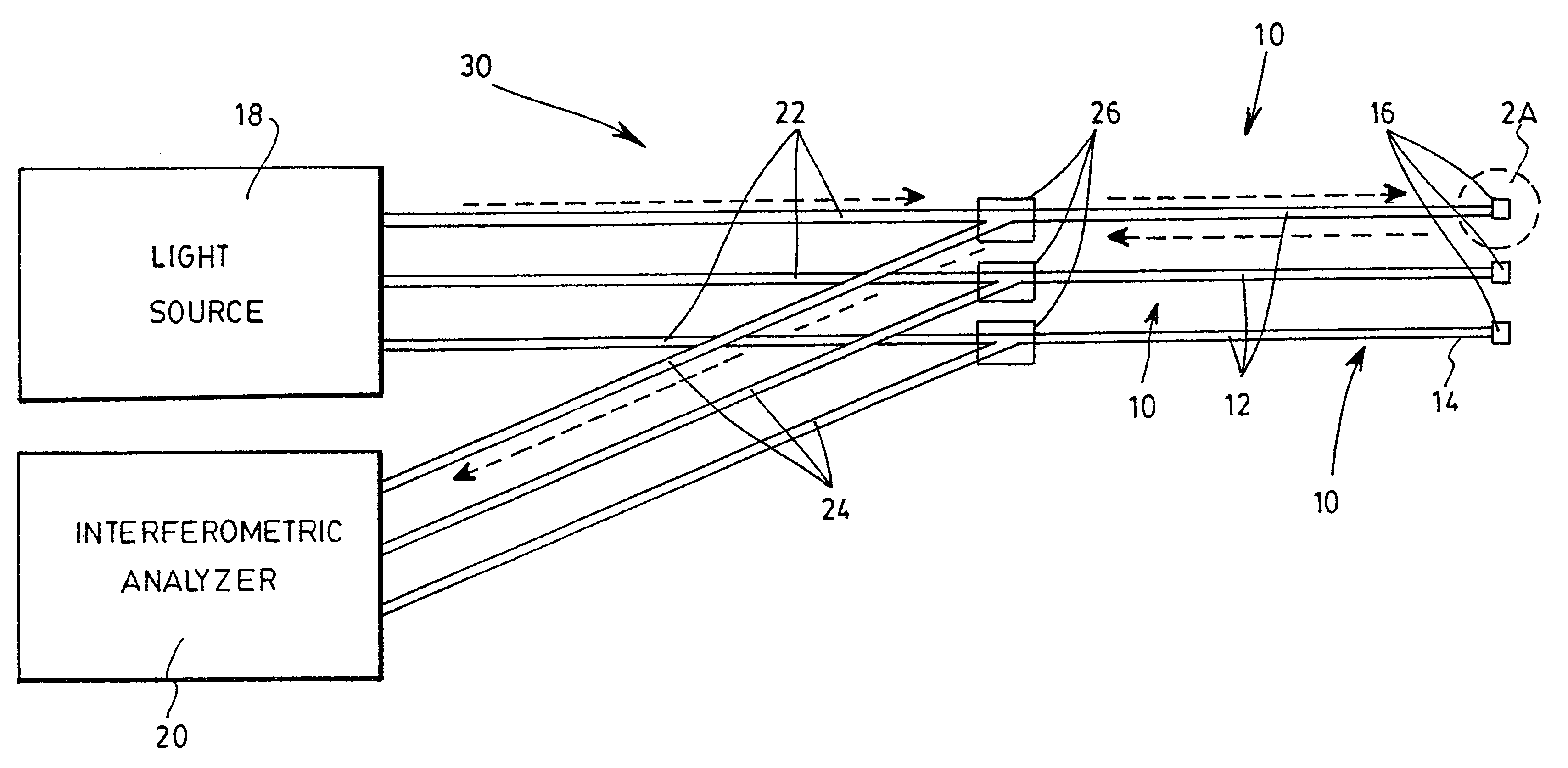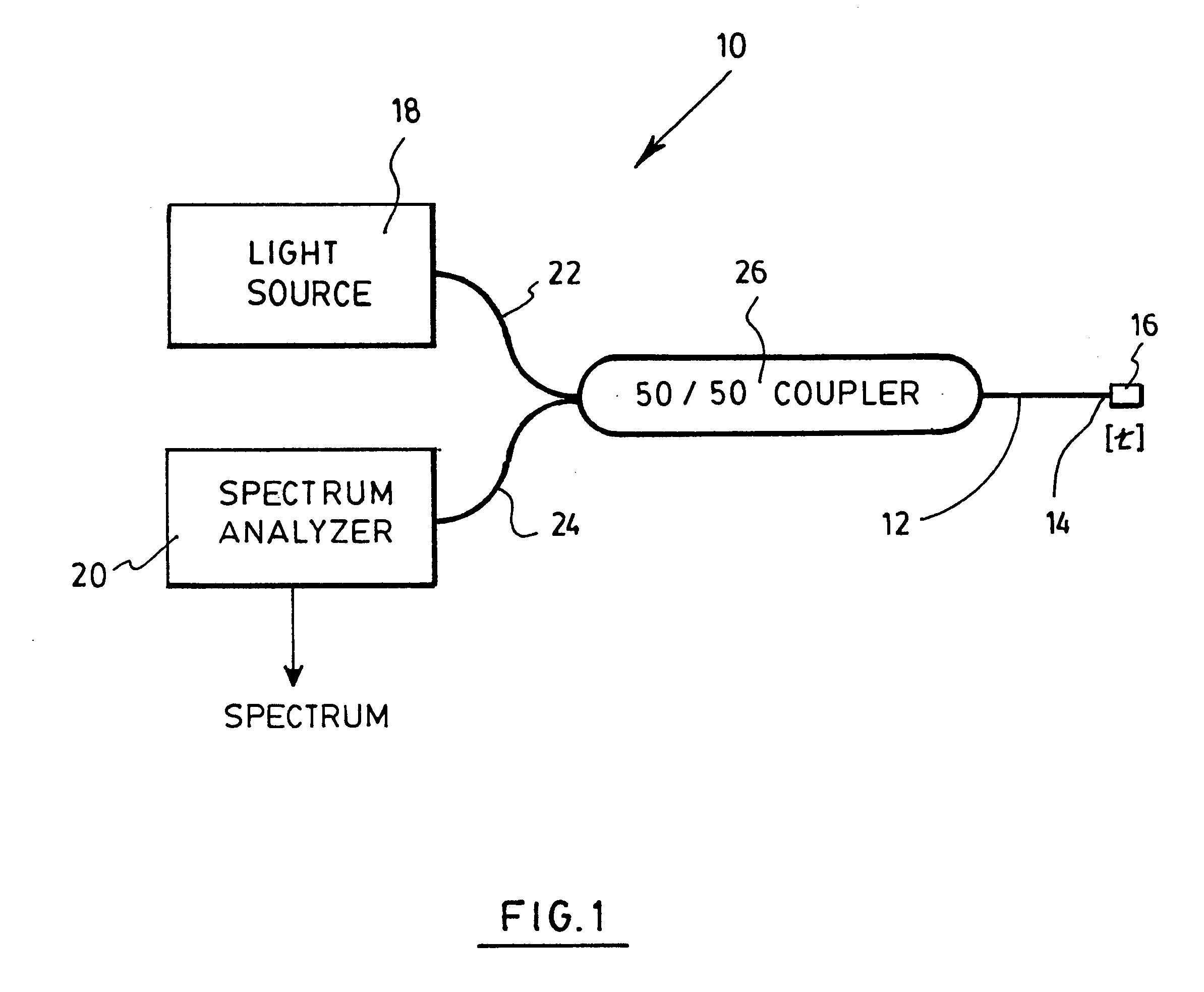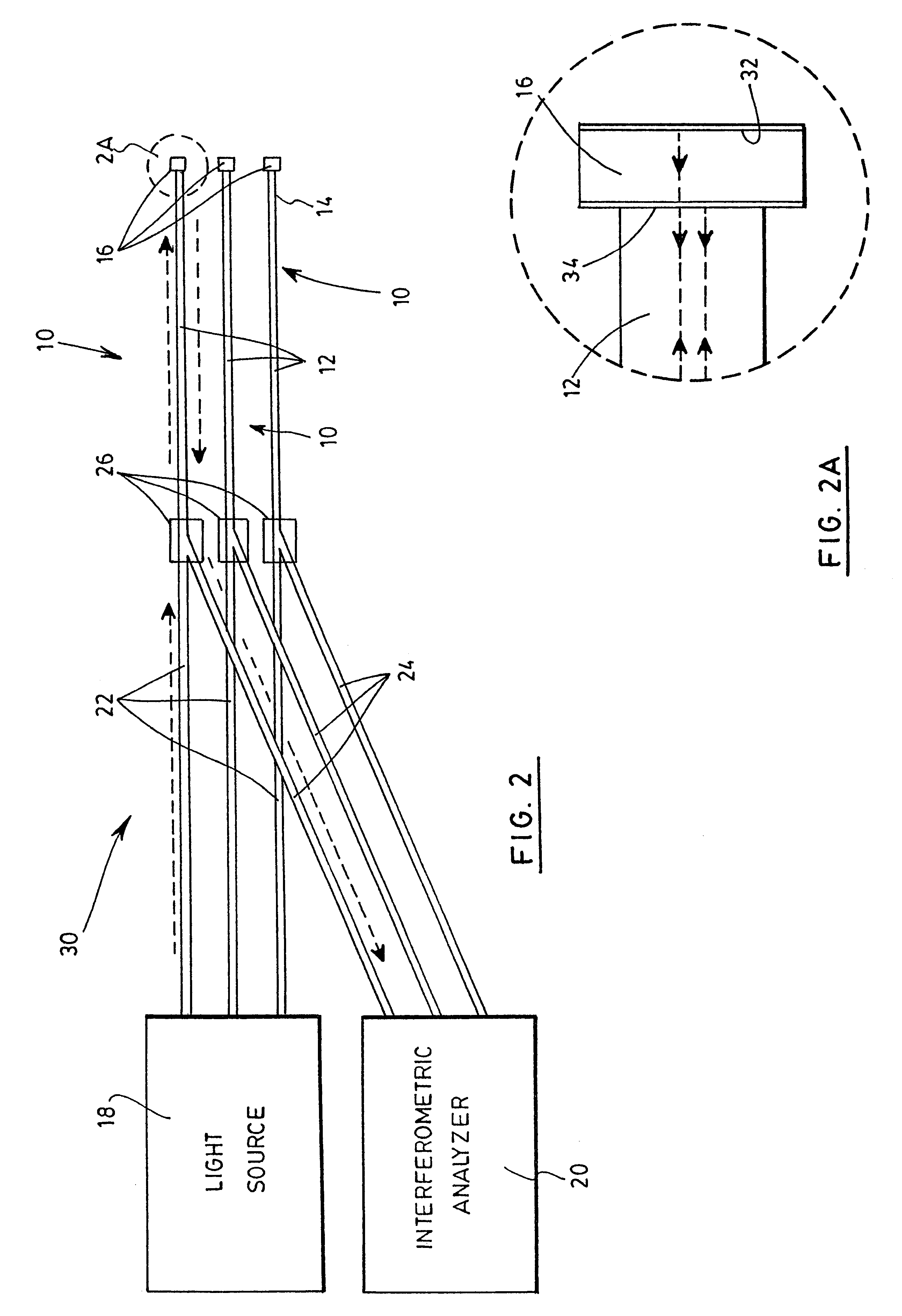Optical sensing devices
a technology of optical sensing and sensors, applied in the direction of converting sensor output, photometry, instruments, etc., can solve the problem of frequent calibration or "retraining" of sensors
- Summary
- Abstract
- Description
- Claims
- Application Information
AI Technical Summary
Problems solved by technology
Method used
Image
Examples
Embodiment Construction
With reference to FIG. 1, there is shown an optical sensor 10 for detecting a substance in a solution in accordance with a first preferred embodiment of the invention.
The sensor 10 first includes an optical fiber 12, which could be a typical silica fiber or be made of any other appropriate material. The fiber 12 has a free extremity 14, which has been cut along the cross section of the fiber 12 so as to define a plane normal to its longitudinal axis. A polymer layer 16 is deposited on the free extremity 14, and extends in this normal plane. The polymer layer 16 has a thickness t related to substance to be detected when exposed thereto, as will be further explained below. Any number of polymeric materials may be used depending on the desired-sensibility of the device. The same polymers as those used for electronic noses may equally be chosen for the present invention. Example of such polymers include polydimethylsiloxane (PDMS), polyoctylmethylsiloxane (POMS), poly(isopropylcarboxyli...
PUM
| Property | Measurement | Unit |
|---|---|---|
| thickness | aaaaa | aaaaa |
| spectrum analyzer | aaaaa | aaaaa |
| thicknesses | aaaaa | aaaaa |
Abstract
Description
Claims
Application Information
 Login to View More
Login to View More - R&D
- Intellectual Property
- Life Sciences
- Materials
- Tech Scout
- Unparalleled Data Quality
- Higher Quality Content
- 60% Fewer Hallucinations
Browse by: Latest US Patents, China's latest patents, Technical Efficacy Thesaurus, Application Domain, Technology Topic, Popular Technical Reports.
© 2025 PatSnap. All rights reserved.Legal|Privacy policy|Modern Slavery Act Transparency Statement|Sitemap|About US| Contact US: help@patsnap.com



